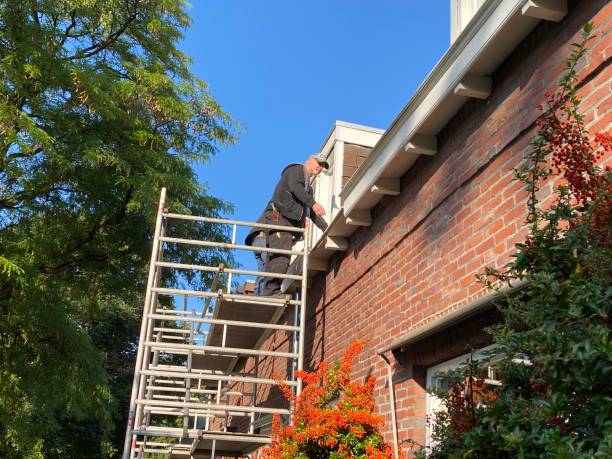A Smart Investment for Home Protection
Rainwater may seem harmless, but without the right drainage system, it can wreak havoc on your home’s roof, siding, and foundation. That’s why quality rain gutters are essential to any California property. They collect runoff and direct it safely away from your home, preventing leaks, erosion, and structural damage.
If you’ve decided to upgrade or replace your system, knowing what to expect during a rain gutters installation helps you prepare, set clear expectations, and ensure you get the results your home deserves.
Step 1: The Initial Inspection and Planning
Before any installation begins, professionals conduct a detailed assessment of your property. They inspect your roofline, fascia boards, and downspout placements to determine where water flows and how to manage it most efficiently.
During this stage, your installer will:
- Measure roof edges and slopes for accurate fitting.
- Evaluate problem areas where water tends to pool or overflow.
- Discuss material and style options — such as aluminum, copper, or steel — based on your home’s architecture and location.
A trusted company like L.I. Metal Systems ensures this planning phase is precise, preventing costly adjustments later and guaranteeing optimal performance.
Step 2: Custom Fabrication of Your Gutters
Modern systems, especially seamless ones, are fabricated on-site using specialized machinery. Instead of using multiple pre-cut pieces, installers create a continuous gutter run that fits the exact dimensions of your roofline.
This process:
- Eliminates unnecessary joints that can leak or trap debris.
- Produces a cleaner, more tailored appearance.
- Increases durability since fewer seams mean fewer weak points.
Custom fabrication is one of the key reasons rain gutters installation done by professionals outlasts store-bought DIY kits.
Step 3: Secure Mounting and Proper Pitching
Next comes the actual installation. Installers attach the gutters to your fascia board using high-strength brackets and fasteners. Each section is angled slightly — a precise pitch that allows water to flow naturally toward the downspouts.
Small mistakes here can lead to major issues later. Too much slope can make the system look uneven, while too little can cause standing water and corrosion. Expert installers use levels and laser tools to achieve a consistent angle across the entire roofline.
Step 4: Downspout Placement and Connection
Downspouts are the final link in your home’s drainage chain. Professionals strategically position them to move water away from your foundation and landscaping. In many cases, they add extensions or underground drains to improve flow and prevent puddling around entryways or patios.
The number and placement of downspouts depend on your roof’s size and pitch. Properly installed downspouts ensure your new rain gutters perform efficiently even during heavy California storms.
Step 5: Testing, Finishing, and Cleanup
Before wrapping up, the installer performs a full system test by running water through the gutters. This confirms smooth flow, correct alignment, and proper sealing at every joint and downspout.
Once verified, they clean up all metal trimmings, screws, and debris. A reputable company also walks you through the system, explains maintenance tips, and provides warranty details — ensuring you know exactly how to care for your investment.
Why Professional Installation Matters
While DIY options may seem tempting, installing gutters correctly requires precision tools, proper measurements, and construction expertise. Professionals handle the technical details — from calculating slope ratios to sealing end caps — that guarantee your gutters perform as intended.
A company like L.I. Metal Systems combines craftsmanship with experience. Their team designs, fabricates, and installs custom systems built for California’s climate, ensuring durability against heat, rain, and coastal air.
Long-Term Benefits for Your Home
A professional rain gutters installation offers more than immediate function. It delivers:
- Leak prevention: Proper sealing reduces the risk of water damage.
- Low maintenance: Quality materials and accurate slope minimize clogging.
- Enhanced curb appeal: Seamless lines complement your home’s architecture.
- Added property value: Buyers recognize and appreciate long-lasting protection.
When properly installed and maintained, gutters can last decades — saving you thousands in potential repair costs.
Key Takeaway:
A professional rain gutters installation is more than just attaching metal channels; it’s a precision process that safeguards your entire home from water damage. With skilled experts like L.I. Metal Systems, homeowners get a system that’s efficient, durable, and visually refined — a small upgrade that makes a big difference in protecting what matters most.
